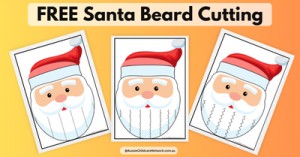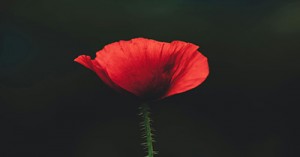STEM refers to an integrated learning approach that introduces Science, Technology, Engineering and Mathematics through play-based activities.
Since the first few years are when the brain is developing most rapidly, it makes sense to incorporate STEM concepts, skills and dispositions in early childhood education.
For educators looking for ways to get your learners talking about STEM, here are a few ways to get started.
Encourage Play
Early childhood is the time when boys and girls want nothing more than to play. A good thing too, since the playground can provide opportunities galore to introduce STEM concepts. Use sorter toys and blocks to teach kids about shapes. Talk about increasing and decreasing speed as they have fun on a see saw. If a rainy day has resulted in a flooded playground, encourage kids to think of how they might get the water to drain out quickly.
Explore Your Environment
One of the things that STEM sets out to do is to banish the notion that such subjects can only be taught in a classroom. Science and Mathematics is all around us and the more children realise this, the deeper their interest will grow. So as set out on a nature walk, call attention to leaf patterns and arrangements of petals on flowers to introduce design and numeracy. Simulate grocery shopping in home corner, to teach the basics of counting and calculating or have fun making sorbet as you talk about different states of matter for water.
Use Questions
Fortunately for early childhood educators, curiosity comes naturally to young children. Use their umpteen questions as cues to launch into age-appropriate STEM discussions. So if they ask about why flies don’t fall off the ceiling, you can talk about sticky feet and Spiderman! Or how balloons can fly? Once you are through explaining why balloons can fly, put out some questions of your own, like “Which balloon is smaller of the two?” or “Which is furthest from you, the red or the blue balloon?” to teach about size and distance.
Equip The Learning Environment
Ensure that your room is equipped with a variety of materials that children can use to measure, count, sort, blow, fly, mix, make larger, make sounds and so on. Besides blocks and sorter shapes, stock up on crayons, paints, bowls, spoons, dough, fun mirrors, flowers and leaves. Sensory learning is a hugely effective way to teach concepts ranging from colour and music to pressure and gravity. Better still, regularly set up simple experiments to introduce STEM concepts. For example something as fun as using droppers to squirt coloured oils into a beaker of water can teach kids about oil and water not mixing while just a paper towel, markers and two glasses of water are enough to demonstrate capillary action.
Use Appropriate Language
Among the reasons that educators sometimes hesitate to introduce STEM subjects is the worry that certain explanations require a complex vocabulary. See if you can replace jargon with simpler phrases; like when conducting an experiment, instead of telling kids to “make observations”, ask “What does it look like”? Though some terms may be unavoidable, wherever possible, use simpler questions to clarify different concepts, like “what do you think will happen” and “did your guess turn out to be correct” to teach the difference between a hypothesis and a conclusion.
With increasing evidence of the benefits of early STEM introduction, there is also a growing corpus of resources for educators. With some research and a hearty imagination, you can implement fun, hands-on activities to integrate STEM within the learning environment.







 As an Educator in Australia, your pay rate falls under the Children’s Services Award 2010. This award states the minimum amount that an employer can
As an Educator in Australia, your pay rate falls under the Children’s Services Award 2010. This award states the minimum amount that an employer can When working as a qualified Early Childhood Teacher (with a university degree) within a service, your rate of pay will come from the Educational Services
When working as a qualified Early Childhood Teacher (with a university degree) within a service, your rate of pay will come from the Educational Services When working as a Diploma Qualified Educator your pay rate is from the Children's Services Award 2010. This Award states your minimum rate of pay
When working as a Diploma Qualified Educator your pay rate is from the Children's Services Award 2010. This Award states your minimum rate of pay When working as a Cert 3 Qualified Educator, your pay rate is from the Children's Services Award 2010. This Award states your minimum rate of
When working as a Cert 3 Qualified Educator, your pay rate is from the Children's Services Award 2010. This Award states your minimum rate of Educational Leaders play a crucial role in their early childhood service by ensuring that the educational program aligns with best practices and supports the holistic
Educational Leaders play a crucial role in their early childhood service by ensuring that the educational program aligns with best practices and supports the holistic In early childhood education and care, ratios are more than a technicality—they are a frontline safeguard. Every child deserves responsive supervision, emotional connection, and developmental
In early childhood education and care, ratios are more than a technicality—they are a frontline safeguard. Every child deserves responsive supervision, emotional connection, and developmental With the new national child safety reforms kicking in on 1 September 2025, early childhood services like yours have a real opportunity to lead the
With the new national child safety reforms kicking in on 1 September 2025, early childhood services like yours have a real opportunity to lead the Here’s a comprehensive Mobile Phone and Smart Watch Policy tailored for early childhood education and care (ECEC) services in Australia, aligned with the latest 2025
Here’s a comprehensive Mobile Phone and Smart Watch Policy tailored for early childhood education and care (ECEC) services in Australia, aligned with the latest 2025 The Sea of Fish Challenge is a national initiative that invites children, educators, families, and communities to create and display fish artworks as a symbol
The Sea of Fish Challenge is a national initiative that invites children, educators, families, and communities to create and display fish artworks as a symbol Across the early childhood education and care sector, educators are sounding the alarm: current staffing ratios are insufficient to deliver safe, meaningful, and developmentally appropriate
Across the early childhood education and care sector, educators are sounding the alarm: current staffing ratios are insufficient to deliver safe, meaningful, and developmentally appropriate


